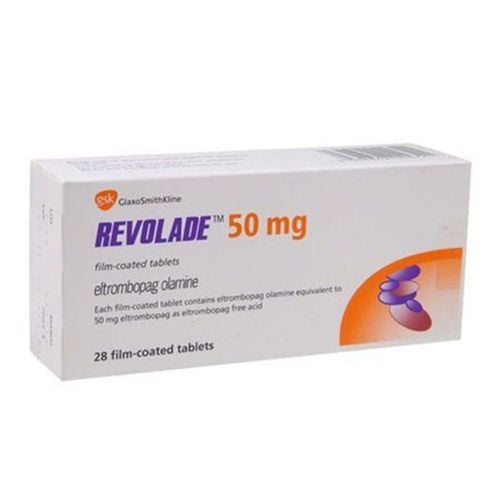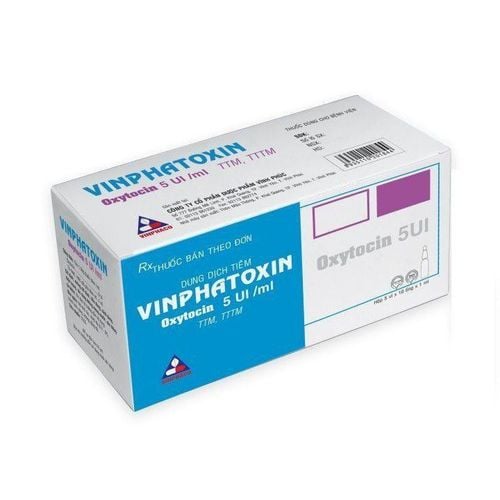This is an automatically translated article.
Article written by Doctor Nguyen Ngoc Phuong Nam - Emergency Medicine Doctor, Emergency Department - Vinmec Central Park International General Hospital
Thrombocytopenia in pregnancy is a common hematological complication that can be detected incidentally or caused by pre-existing conditions of thrombocytopenia, which may present with external clinical manifestations. outside is bleeding (bleeding mucous membranes, bleeding teeth....) or no bleeding complications appear.
1. Causes of thrombocytopenia bleeding
Platelet count drops about 10% during pregnancy, mostly during the last 3 months of pregnancy. Causes of thrombocytopenia bleeding:
75% of pregnancy-related thrombocytopenia. 20% due to hypertensive disorders in pregnancy. 5% due to immune disorders during pregnancy.
Trắc nghiệm: Bạn có biết thai nhi tuần 6 phát triển như thế nào không?
Thai nhi tuần 6 đánh dấu một mốc tăng trưởng với tốc độ phi thường. Mẹ chắc hẳn đang rất hạnh phúc và tò mò về sự phát triển của con từng ngày. Để biết bé phát triển ở mức độ nào, mẹ có thể làm bài trắc nghiệm sau đây.2. Pregnancy-related thrombocytopenia
2.1 Characteristics Platelet count < 70,000 units/mm3 occurs in the second and third trimesters of pregnancy. There was no hypertension and proteinuria. The pathogenesis is not clear. Possibly due to association with dilution and half-life of platelets. 2.2 Diagnosis and treatment monitoring Other causes of thrombocytopenia must be sought before concluding: Pregnancy-related thrombocytopenia. Monitor platelet count. Watch for signs of bleeding if new. Women with pregnancy-related thrombocytopenia must be cared for by their obstetrician carefully. Hospitalization when platelet count <20,000/mm3 or signs of mucosal bleeding: petechiae on skin, bleeding teeth, abnormal bleeding...

3. Immune thrombocytopenic purpura
3.1 Characteristics Decrease in platelet count < 100,000 units/mm3 occurs in the first 3 months of pregnancy. usually caused by immune thrombocytopenic purpura. Have a history of immune thrombocytopenia prior to pregnancy. The platelet count will be very low by the third trimester of pregnancy. 3.2 Diagnosis and follow-up treatment Immune thrombocytopenic purpura is usually diagnosed before pregnancy. Patients with a platelet count >20,000/mm3 and no symptoms of bruising or bleeding do not require specific treatment during the first to third trimesters of pregnancy. In the last 3 months, if the platelet count is >50,000 units/mm3, a safe "lower route" delivery or cesarean section may be considered. Initial treatment in immune thrombocytopenic purpura is controversial. Treat only when the platelet count is low, there are signs of mucosal bleeding or the risk of bleeding is high, assessed on an individual basis. Corticosteroids are the first choice of low cost but in addition have many side effects: High blood pressure, diabetes, excessive weight gain, osteoporosis... Gamma globulin intravenous dose 1g/kg/day/1 response response to treatment up to 60%, the average duration of response is 1 month. Splenectomy: If the patient does not respond to corticosteroids and gamma globulin, splenectomy will be required, preferably splenectomy in the second 3 months of the cycle. The patient was closely monitored for bleeding complications up to 5 days postpartum.
4. Thrombocytopenia bleeding associated with hypertensive disorders of pregnancy
Thrombocytopenia associated with hypertensive disorders of pregnancy is often pathological: Preeclampsia and HELLP syndrome. This is a dangerous group of diseases associated with high blood pressure and proteinuria occurring after 24 weeks of pregnancy. With this group of diseases, pregnant women must be monitored very closely, and may have to be hospitalized for monitoring. With HELLP syndrome: Hemolytic anemia, elevated liver enzymes, thrombocytopenia. HELLP syndrome occurs in about 10% of women with severe preeclampsia and is more common in women over 25 years of age. The mortality rate for the mother is 1% and the fetus is 10-20%. Fetal death is due to placental ischemia, placental abruption, premature birth, and intrauterine asphyxia. The definitive treatment for preeclampsia and HELLP syndrome is termination of pregnancy.

5. Conclusion
Thrombocytopenia in pregnancy usually does not require specific treatment, mainly monitoring for signs of bleeding, danger signs and some special conditions during pregnancy such as Pre-eclampsia and HELLP syndrome . Therefore, mothers should visit antenatal care periodically to monitor and take care of the health of pregnant women as well as the fetus.
Vinmec International General Hospital offers a Package Maternity Care Program for pregnant women right from the first months of pregnancy with full antenatal check-ups, periodical 3D and 4D ultrasounds and routine tests to ensure that the mother is healthy and the fetus is developing comprehensively.
Please dial HOTLINE for more information or register for an appointment HERE. Download MyVinmec app to make appointments faster and to manage your bookings easily.














